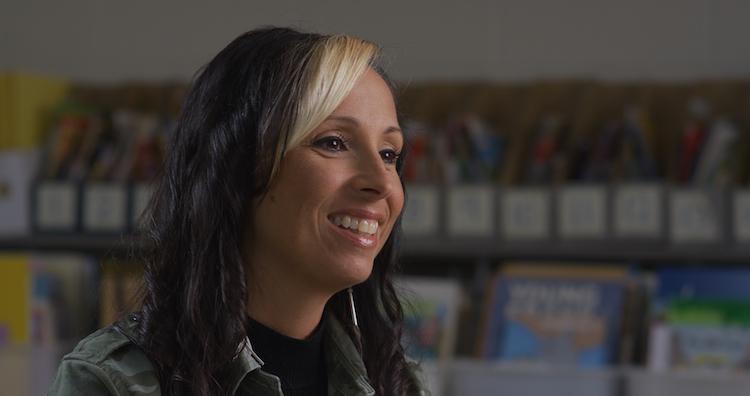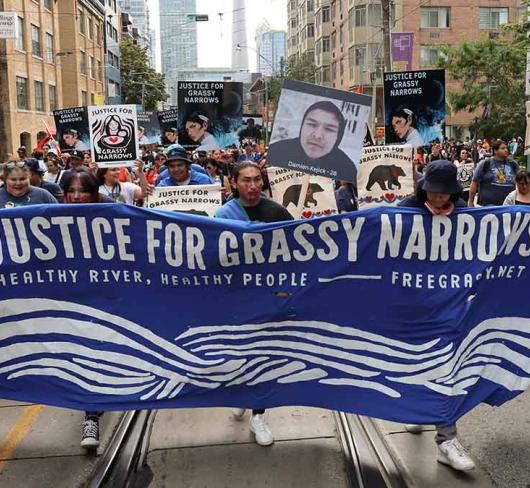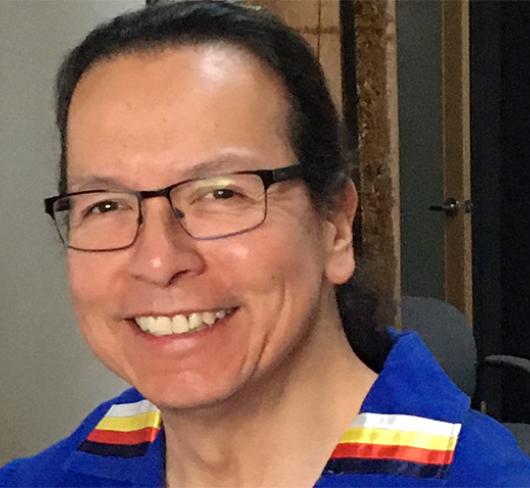
Making Permanent Connections: Izida Zorde in conversation with Idle No More organizer, lawyer and Ryerson University Chair in Indigenous Governance, Pam Palmater
IZIDA: How did Idle No More get started? What sparked the movement?
PAM: The amazing thing about Idle No More is that it has been ongoing since contact. There have always been Indigenous leaders, Indigenous women and grassroots people trying to resist colonization. The interesting thing about Idle No More, however, is that we took a bit of a different approach. We’d always looked to leaders and chiefs and organizations to do the organizing and the rallying and we decided it wasn’t enough. So, we decided to educate grassroots people and say we need to be the ones who rise up and we need to actually engage our treaty partners and say, “Hey, stop being idle and rise up with us and, you know, take this country back for the people.”
The name Idle No More started as a Tweet when we were engaging in some of our teach-ins. At the very beginning, we wondered how to get people mobilized. They needed information. So, as we were doing teach-ins and meeting in different communities, we just kept using the hashtag Idle No More so it would be attached to the things that we were doing. There were other names being used at the same time but Idle No More seemed to be the one that really caught on with the people and that’s how it started.
IZIDA: What are the core values of Idle No More?
PAM: One of the core values of Idle No More is, first and foremost, not to be a movement led by one person or controlled by any particular political organization. We decided that there are so many educated and active and traditional Indigenous women across the country already planted in our communities, already working at the grassroots level, all we have to do is share information and empower others to join us in the movement. That’s why you saw Indigenous women leading it in the beginning.
We are trying to stop all the things we don’t like that are going on in this country, including undemocratic laws, lack of consultation or engagement with the citizenship and First Nations, the destruction of our environment. Really, we’ve gone so far beyond what real democracies are because democracies are governing by the people for the people and power is now in the hands of a very few. We decided to empower not just ourselves as Indigenous peoples but also other Canadians to see how our issues impact them as well. Poisoned water for us means poisoned water for Canadians.
IZIDA: How does this kind of empowerment agenda change the dynamics between the government and Indigenous people?
PAM: The whole Idle No More movement and the rising up of Canadians and Indigenous people really changed the relationship between Indigenous peoples, Canadians and the government. We have reasserted our power, our sovereignty, our treaties, our laws and our traditions, all of which have kept us alive. We are asserting our rights with boots on the ground and in the courts and in the political realm, but also withdrawing from processes that aren’t working for us. I think that’s just as key, making sure that we don’t legitimize processes that aren’t working for Canadians or Indigenous peoples.
IZIDA: How has the Idle No More movement helped develop solidarity among equity- and justice-seeking groups?
PAM: I work with a lot of different First Nations and First Nations political organizations and also grassroots organizations and communities and movements like Black Lives Matter and anti-poverty groups and anti-homeless groups, environmental groups. And we have found through Idle No More that we have a lot of allies in all of these organizations, especially among unions and teachers’ and women’s groups. We found that by acting in solidarity, not only do we reinforce what they’re advocating for, but they can help reinforce what we’re advocating for. Probably the best thing that’s come out of the Idle No More movement has been making these connections and then working in solidarity on a go-forward basis.
IZIDA: What are some things that have changed as a result of people organizing their communities with Idle No More?
PAM: One of the best things that has happened since Idle No More is that the connections we made have become permanent. The other really important thing for us as Indigenous peoples is that we got informed. The empowerment that resulted from having teach-ins and visiting communities and little groups of people and saying, “Here’s what’s happening, here’s what the implications are,” means that those same people want to know more and want to stay involved. We don’t just accept the five-minute blurb on the news. Everyone challenges everything and for me, that’s most impactful. Yes, the government has good intentions but when you really look at the research and see the data, it often contradicts what the government is doing. The people we were helping inform are now informing other people and we’re reaching younger and younger audiences. Now it’s about empowering kids in high schools and junior high and elementary schools. Some people may think that’s too young but, in fact, there are so many children who are actively engaged in environmental issues. It’s not a stretch to say, “Well, here’s what’s happening with Indigenous peoples, and here’s what’s happening in the anti-poverty movement and around issues of racism,” and talk about what they can do about it. The younger you get these children, the more likely it is we’re going to be able to create empathetic, compassionate, kind, loving, caring adults, the kind of people we want to be our neighbours, friends and colleagues.
IZIDA: Are there lessons you’ve learned that you think teachers organizing for better public education should know?
PAM: I think one of the lessons that’s important in organizing is to be open. This is about including everyone and everyone’s voice and everyone’s perspective. This doesn’t mean that one particular voice might not be the one that leads the way in a particular strategic direction or in a piece of litigation or in a decision that’s made, but we really can’t be making community-based decisions without hearing what everybody has to say and really trying to work towards consensus as opposed to the default of “the 51 percent is the way to go.” We have to find ways to incorporate different people’s concerns and requests.
IZIDA: If you had to give a five-step tutorial on how to organize what would you tell people?
PAM: Five steps to organizing. The first two are the most important because they’re the ones you don’t do with anyone but yourself. The first thing you have to do is decide what you have to offer. One of the most difficult things for people who are actively involved in a movement of any kind is to be inundated with hundreds of phone calls from people saying, “Hey, I’m here.” You really need to know what it is you have to offer. Are you offering financial support? Are you boots on the ground? Are you an actual organizer in logistics? Are you the person that does support behind the scenes? Are you providing food for people? Are you doing something invisible like babysitting for the people who are going to be in a march, or helping people do research for a court case that’s coming up? These things don’t get any media attention; there’s not a lot of celebration around them. But it’s these supports for people doing the boots on the ground stuff that are probably the most important. It’s what sustained Idle No More.
IZIDA: Step two?
PAM: Okay. So, step two is you have to educate yourself. There are a lot of allies and people who are really eager to help in different movements, but they haven’t taken the time to educate themselves about the issues we’re talking about. Because organizers are so few and far between and because those who put their lives into supporting social movements have to put so much time into it, they can’t be expected to educate everyone on the issues. We have to take some responsibility and say, “Okay, I want to be an ally of the Indigenous movement. Instead of asking someone to explain the Truth and Reconciliation Commission to me, I’m going to go online, download the report and read it myself.”
The third step is contacting the group you would like to work with and saying, “Here’s what I have to offer. Here’s what I know. Tell me what you need in terms of organizing or litigation strategies or PR, social media, whatever it is,” as opposed to telling people how it’s going to be. For us as Indigenous peoples in the movement, the worst thing that can happen is for people to come in and be our saviours instead of respectful allies. We don’t need anyone to tell us what we want, what we need or what would make the world better. What we need are people to stand beside us and offer support.
Step four in the five steps is about strategic planning. The thing about strategic planning is that not everything has to be pre-planned really, really well. What we found with Idle No More is that it was organic; we didn’t have to tell people what to do. We would just put a call out, or we would say this is what we’re doing, and there would be solidarity events all across the country. But what kinds of issues are we going to raise in the media, who are we going to get involved, how are we going to do damage control for negative media, are good to think through up front. Do we have lawyers on call in case people are arrested, or we want to do litigation, or we need a judicial review? It’s helpful if that’s in place, but you can also just allow it to happen organically. Sometimes you might start organizing community events and then the communities go on to host their own corresponding and solidarity events. Organizing is about making space for that organic part.
And the last step is never forgetting that any social movement is a conversation with the public and it always has to be done with the greatest integrity and respect. No matter how emotional it is, no matter how intense it is, no matter how much we want something, the best way to engage with the public is with the facts.
IZIDA: Is there anything else that you want to say specifically to elementary teachers?
PAM: The only other thing I can think of that would apply to elementary teachers trying to organize in the community is engaging with everyone, even people you think might not be related to how we build better schools, how we get a better education system. The key to any social movement is not just to build relationships for the purpose of that social movement but to maintain those relationships for the people you’re working with and their social movements. Even though sometimes we see our movement as individual – it’s environmental, it’s Indigenous, it’s union-based – in fact they’re all the same. We all end up in the same place. We’re looking for social justice and we can’t do that if only one movement is strong and we’re weak on all the other fronts. But that means people who are in social movements have to have time to give to their partners who are helping them and that can be difficult. But that being said, you gain so much if you’re the kind of person who is there when people call on you, so that when you need people, they’ll be there for you. And it might not always be the same people. Relying on particular individuals over and over and over again doesn’t work. That’s why we have to be so inclusive, so diverse, so broad, and find different ways of staying involved in all of the other movements that are helping your particular movement.
Izida Zorde is an executive staff member at ETFO and the editor of ETFO Voice.

